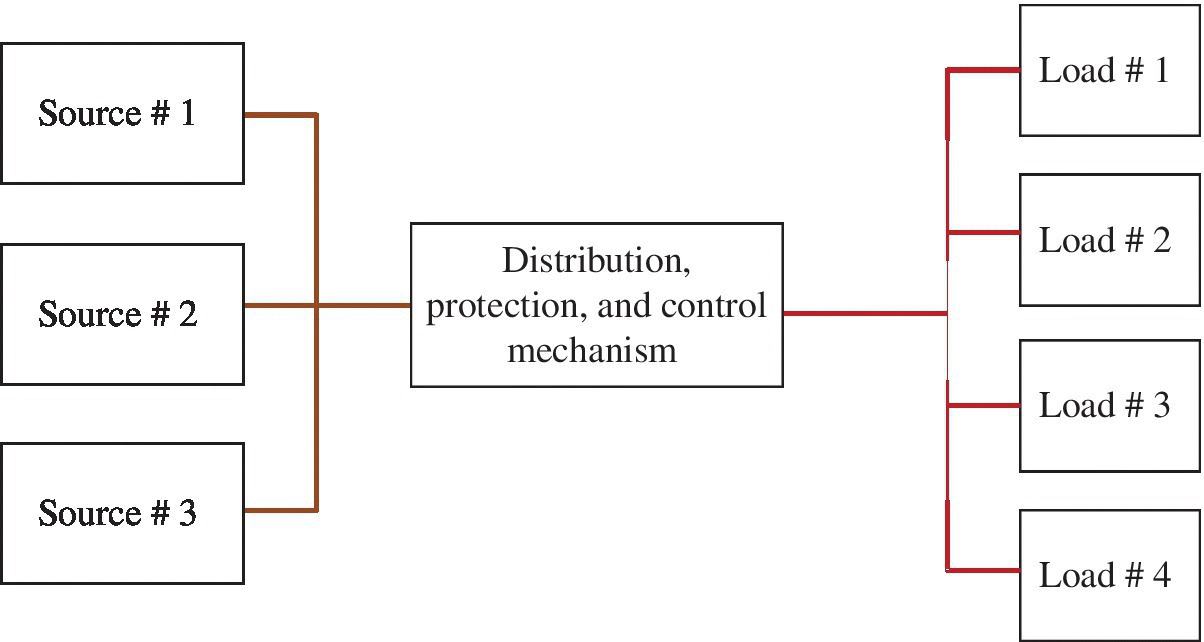17Vehicular Power Control Strategy and Energy Management
17.1 A Generic Framework, Definition, and Needs
The terms power and energy management are “almost” synonymous when used in the context of vehicular systems. To be more precise, power is an instantaneous quantity, whereas energy involves a period of time over which the power is applied. Although the meaning will become clearer as we progress through this chapter, normally when power is “managed” in general energy will be managed as well.
The question of management of power or energy arises primarily for the following reasons (although the term “management” has some additional implications, which will be described later). Consider Figure 17.1 which represents a very generic system involving several power/energy sources and loads, including distribution of power to the loads.

Figure 17.1 A block diagram schematic showing the source and load distribution system.
In this diagram we have several sources [1]. Each of these sources could be of any particular type. For example, it could be an ICE, which is a power converter implying that it is an energy converter which translates chemical energy into mechanical power. It could also be a battery, which is an electrical energy storage device, or it could be a fuel cell, which converts chemical energy into electrical power, or it could be a flywheel, which stores kinetic energy in ...
Get Hybrid Electric Vehicles, 2nd Edition now with the O’Reilly learning platform.
O’Reilly members experience books, live events, courses curated by job role, and more from O’Reilly and nearly 200 top publishers.

